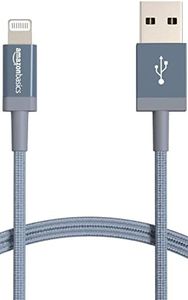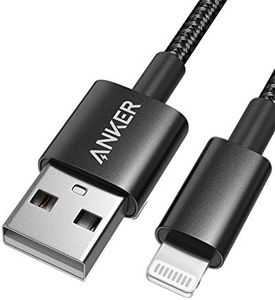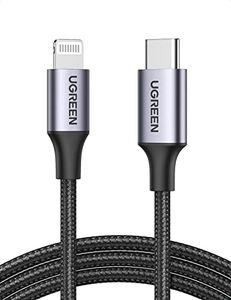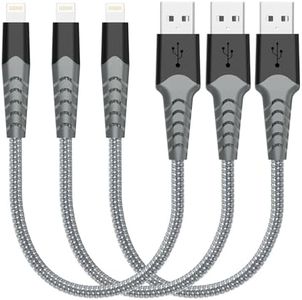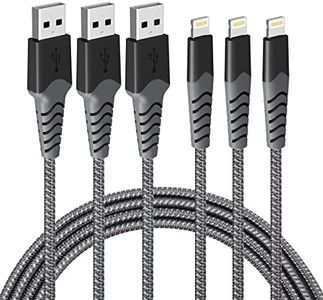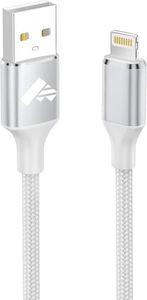We Use CookiesWe use cookies to enhance the security, performance,
functionality and for analytical and promotional activities. By continuing to browse this site you
are agreeing to our privacy policy
10 Best Lightning Cables
From leading brands and best sellers available on the web.Buying Guide for the Best Lightning Cables
When choosing a Lightning cable, it’s helpful to think about how you plan to use it and where. Lightning cables are typically used for charging Apple devices and transferring data, so it's important to pick one that meets your speed, reliability, and durability needs. Instead of just choosing the first cable you see, take a moment to consider a few key features to ensure it suits your day-to-day habits.LengthCable length determines how far your device can be from the charging source. Short cables (1–3 feet) are great for desks and portable power banks, offering less clutter and easier storage. Medium lengths (4–6 feet) are the most versatile, working well for bed stands, offices, or car use, giving you enough slack without being unwieldy. Long cables (over 6 feet) are best for situations where outlets are far away, like in a living room or airport. To pick the right length, think about where you usually charge your device and whether you need extra flexibility or prefer a tidy, short cable.
Durability and MaterialDurability refers to how well the cable can handle bending, pulling, and everyday wear. Standard cables have basic plastic coating, which may break or fray over time if bent often. Braided cables or those with reinforced ends are much sturdier and resist tangling, making them great for heavy use or travel. If you’re someone who moves your cable a lot or tends to toss it in bags, look for a reinforced or braided cable.
Connector QualityThe connectors (the ends of the cable) should fit snugly into your device and power source, and high-quality connectors are less likely to break or loosen. Some cables offer additional reinforcement at the connectors, which helps prevent breakage. If you frequently plug and unplug your cable, or use it with multiple devices, getting a well-made connector can save you from frequent replacements.
Charging Speed and Data TransferCharging speed and data transfer rate are based on the cable's internal wiring and compatibility. Standard Lightning cables handle regular charging and basic data sync, while some can support faster charging if both your charger and device allow it. If you often move large amounts of data (like photos or videos) or want the fastest charging available, look for cables labeled for fast charging or higher data transfer. Otherwise, a basic certified cable will meet daily needs.
Certification (MFi Certification)Certification indicates that the cable meets Apple’s standards for safety and compatibility, with MFi (Made for iPhone/iPad) being the key indicator. Non-certified cables might be cheaper, but they can stop working after iOS updates or even damage your device. Always check for MFi certification if reliability and device safety are important to you, especially for primary cables used daily.
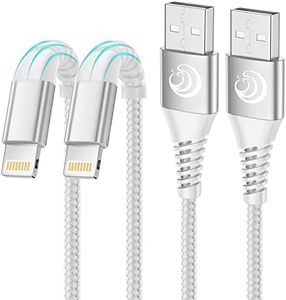

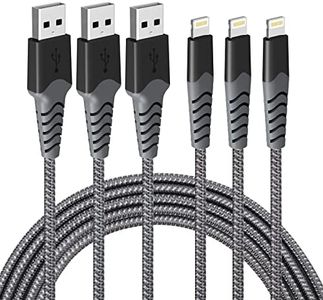
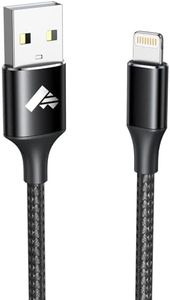
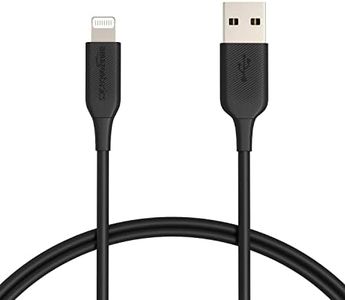
![iPhone Charger Cable 90 Degree 2M 3Pack, [Apple MFi Certified] USB A to Lightning Cable Braided iPhone Cable Right Angle Fast Charging Cord for iPhone 14 13 12 11 Pro Max XR XS Max X 10 8 7 6 SE, iPad](https://images-proxy.bestreviews.guide/XnHu-N7TBvuVUTgL3M3is_8WXCc=/0x300/https://m.media-amazon.com/images/I/51HsTCz9s-L._AC_CX679_.jpg)
